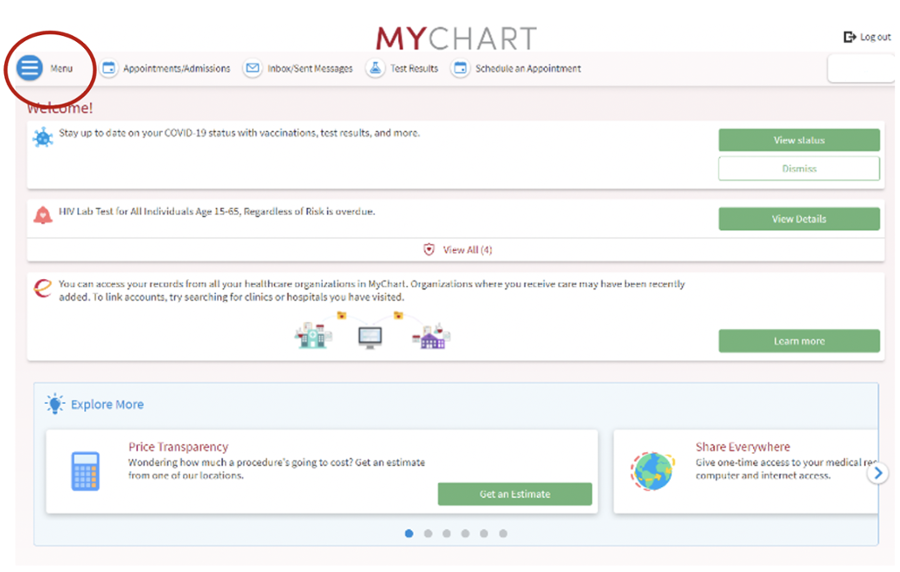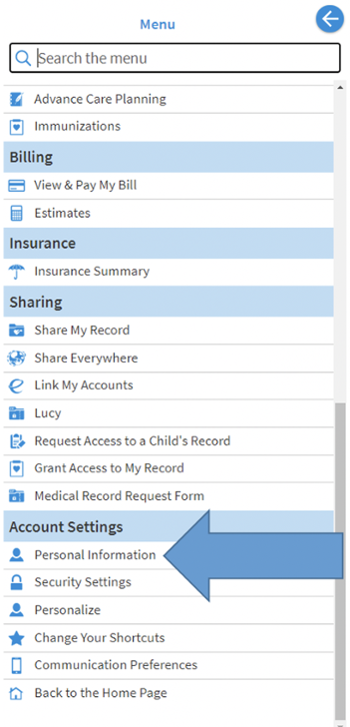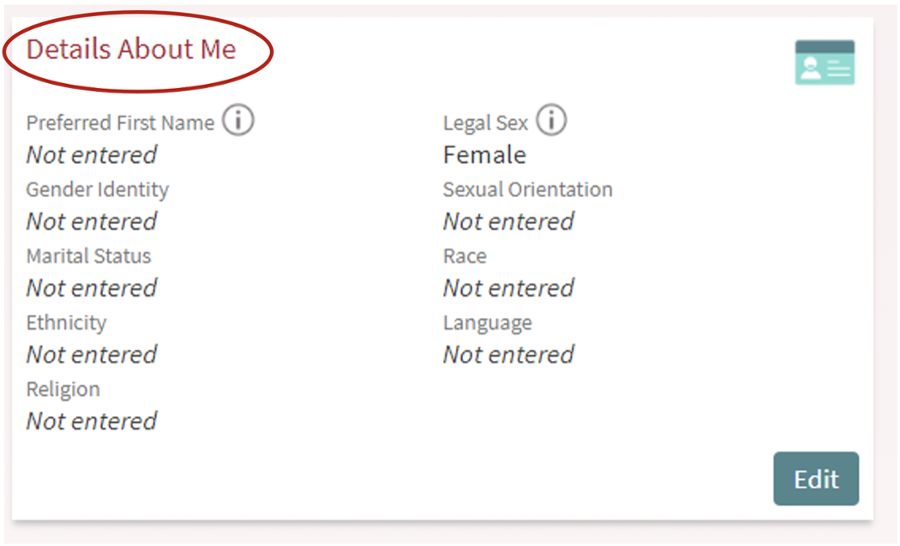
We Ask Because We Care
We recently added new questions about sexual orientation and gender identity (SOGI) to MyChart, our electronic medical record system and our patient-check-in process. Our health system believes that asking these questions is important so we can provide everyone with culturally responsive, patient-centered services they need.
We will ask these questions every six months just like when we verify your other demographic information. All SOGI information is optional. If you do not feel comfortable disclosing this information you may choose the option “choose not to disclose”.
If you don’t know which information to use, that’s alright. There are no right or wrong answers. If you don’t find an answer that fits, you can choose the option “something else”, or you can talk with your provider.

.png)
Why Ask About My Sexual Orientation and Gender Identity?
Research shows that lesbian, gay, bisexual, transgender, queer, and other sexual or gender minority (LGBTQ+) people have unique health needs that are different from the rest of the population. They also experience significant health disparities and barriers to accessing health care services. Capturing SOGI information of patients helps our system deliver appropriate health services to LGBTQ+ people as well as all of our patients.
What Is Gender Identity?
Gender identity is a person’s internal sense of gender. For example, people may think of themselves as a man, woman, a combination of both, neither, or even another gender. Our provider or clinical staff will ask you once in the exam room: “what is your current gender identity?” We ask this question to recognize that identities can change over time. This also provides patients with the opportunity to update us about this annually.
Transgender
Transgender people identify with a gender that is different than their sex assigned at birth.
Transgender man describes someone who was assigned female at birth who identifies as a man.
Transgender woman describes someone who was assigned male at birth who identifies as a woman.
Non-binary and gender fluid identities describes someone whose gender identity may be a combination of both man and woman, neither, or fluid from one day to the next. This includes but is not limited to agender and gender queer.
Two-Spirit describes someone who identifies as having both a masculine and a feminine spirit and is used by some Indigenous people to describe their sexual, gender, and/or spiritual identity.
Sex Assigned at Birth
Sex assigned at birth is sometimes referred to as biological or anatomical sex. It is the sex that an infant is assigned when they’re born, usually recorded on a birth certificate. Sex assigned at birth helps our providers understand what organs a person has, especially if their gender identity or legal documents show a different record.
What Is Sexual Orientation?
Sexual orientation is how a person describes their emotional, romantic, and sexual attraction to others. Our providers or clinical staff will ask once in the exam room, “Do you think of yourself as….” With the following sexual orientation options.
Straight (not lesbian or gay) describes women who are attracted to men and men who are attracted to women.
Lesbian describes a woman who is attracted to other women.
Gay describes a person who is attracted to people of their own gender. Most commonly this term is used when referring to men who are attracted to men but may be used interchangeably with lesbian for women who are attracted to other women.
Bisexual describes a person who is attracted to more than one gender. This can include men, women, and people of other gender identities.
Pansexual describes a person who is emotionally and physically attracted to people of all gender identities, or whose attractions are not related to other people’s gender.
Asexual describes a person who experiences little or no sexual attraction to others. Asexual people may still engage in sexual activity.
Queer is an umbrella term to describe people who think of their sexual orientation or gender identity as outside of societal norms.
What Is a Chosen Name?
Many people may have another name that they choose to go by instead of their legal name. For example, a patient’s legal name may be Charles but they prefer Charlie or another patient’s legal name may be Sarah but they prefer the name Cody. Our registration staff will ask all patients if they have another name they would like to go by when accessing health care with us.
We can help update your legal name in your medical record when you provide documentation of a legal name change.
What Are Pronouns?
Pronouns are the words we use to refer to someone when not using their name. Many people will assume someone’s pronouns based on their appearance, name, or how their voice sounds. This can relay a harmful message that people have to look or sound a certain way to demonstrate the gender that they are or are not. Using someone’s correct pronouns is a way to respect them.
Examples include he/him/his, she/her/hers, they/them/theirs and others.
If your pronouns and chosen name are not used correctly, please inform your care team. If this continues to be a problem, we invite you to call our customer service team at 801-581-2023 to file a complaint.
Information Use
This information is only used to help your provider(s) meet your health care needs. In addition, as we consistently capture this information of all patients, we can identify gaps in care or service within our communities. This greatly impacts our ability to improve the care we give to patients.
Also your information is protected by law, just like all your other health information. Your provider(s) and care team will have access to this since it is part of your medical record.
Entering This Information In MyChart
1. Visit the MyChart portal login page. Sign in with your MyChart ID and password.

2. Click on the Menu icon on the top left hand side.

3. Scroll down to Account Settings and click on Personal Information.

4. Click Edit under Details About Me to enter your chosen (preferred) name, gender identity, sexual orientation, and more.

You cannot edit your legal name and sex until you can provide documentation of a legal name or gender marker change. Due to limitations in our electronic medical record, pronouns have to be entered in by a clinical staff member.





